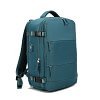Are you a stay-at-home parent yearning to embark on a side hustle and make money online? Or perhaps you're someone with the dream of working from home and becoming a blogger or influencer? You're in the right place! This in-depth guide will take you through the exhilarating world of blogging and online businesses, offering valuable insights on how to kick-start your journey to success.
What is Blogging?
Let's start with the essentials. Blogging is a dynamic platform for sharing your thoughts, expertise, and passion with a global audience. It's the gateway to creating content, connecting with like-minded individuals, and carving a path to financial prosperity. Whether you're a stay-at-home parent in need of an outlet for your creative energies or someone eager to begin a side hustle, blogging can be your ideal solution. If you want the information for later, you can download my Free eBook that guides you through all the steps, but for now, let's continue!
Step 1: Finding Your Niche
At the core of successful blogging lies the vital concept of finding your niche. This niche is the subject or topic that ignites your passion and knowledge. It should be something you can write about consistently, whether it's parenting, culinary arts, travel, technology, fashion, or any other domain that fascinates you.
The key to a successful blog is to be passionate about your chosen niche. When you're genuinely interested in your subject matter, it will be easier to stay motivated and consistently create high-quality content. Before committing to a niche, take some time to consider your own interests and expertise. What are you truly passionate about? What do you have knowledge or experience in that others might find valuable?
Once you've identified your niche, it's time to do some research. Check out other blogs and websites in your chosen niche. What are they writing about? Who is their target audience? What can you bring to the table that's unique or different? Understanding the competitive landscape in your niche will help you refine your own approach and find opportunities to stand out.
Step 2: Setting Up Your Blog
To embark on your blogging journey, you'll need a platform and a captivating domain name. User-friendly platforms like WordPress, Blogger, or Wix offer a plethora of templates that can help you create an eye-catching website. The one I use and recommend is WordPress. Now, when selecting a domain name, choose one that reflects your niche and is easy for your audience to remember.
The following are the things I look for in a blogging platform; since I use WordPress, these are the things it offers me, but if you choose another one, make sure it offers you these as well:
- Ease of Use: Look for a platform that you find easy to navigate and use, especially if you're new to blogging.
- Customization Options: Choose a platform that allows you to customise your blog's design to reflect your brand and niche.
- Scalability: Think about your long-term goals. Some platforms offer more scalability for future growth; this is the case when using WordPress.
- Cost: While some platforms are free, others require a subscription fee. Consider your budget when making a decision.
- Hosting: Decide whether you want a self-hosted blog or a hosted one. Self-hosted blogs offer more control but require additional setup. But there is nothing to be scared of, because you can learn it all.
When it comes to your domain name, try to make it memorable and relevant to your niche. It's often a good idea to include a keyword related to your niche in your domain name. For example, if your blog is about parenting tips, a domain like "ParentingProTips.com" is informative and easy to remember. You can check if your domain is available on HostGator.
Step 3: Crafting High-Quality Content
Your content is the heart and soul of your blog. To attract readers and build a loyal following, it's essential to consistently create content that is both informative and engaging. Here are some tips I use for producing high-quality blog posts:
Keyword Research
Keyword research is a fundamental part of creating content that ranks well on search engines and attracts organic traffic. Start by using keyword research tools like Google Keyword Planner or SEMrush to identify keywords related to your niche. Applying all these has been life-changing!
For instance, if you're blogging about parenting, you might discover keywords like "parenting tips," "child development," or "raising happy kids." Use these keywords strategically in your blog posts to improve your search engine visibility. However, avoid keyword stuffing; aim for a natural and reader-friendly use of keywords.
Irresistible Headlines
Your headline is the first thing readers see, and it's often the deciding factor in whether someone clicks on your blog post or not. Make it compelling and thought-provoking to capture their attention. A great headline is both informative and enticing. For example, "10 Proven Parenting Tips for Raising Happy and Healthy Kids" is far more engaging than "Parenting Tips."
To craft effective headlines, consider the following elements:
- Clarity: Ensure that your headline clearly communicates what the article is about.
- Emotion: Use words that evoke emotions or curiosity.
- Value: Let readers know what they'll gain from reading your post.
In-Depth, Well-Researched Content
One of the keys to keeping your readers engaged is by providing them with valuable and reliable information. This involves conducting thorough research on the topics you're covering. Be sure to use credible sources and cite them when necessary.
For instance, if you're writing about child development, you might research the latest studies, expert opinions, and reputable books on the subject. By doing this, you establish your credibility as a blogger, and readers are more likely to trust your insights and advice.
Engaging Multimedia
Today's online audience craves variety and visual appeal. Incorporating multimedia elements into your blog posts can significantly enhance the reader's experience. Here are a few ways I use to integrate multimedia, which you can apply to your content:
- Images: High-quality images related to your content can break up text, provide context, and make your posts visually appealing.
- Videos: Consider creating short videos or embedding relevant videos from platforms like YouTube. Videos can help you explain complex concepts or demonstrate techniques more effectively.
- Infographics: Infographics are a fantastic way to convey information visually. You can create your own using tools like Canva or find ready-made ones to include in your posts.
- Audio: Podcasts and audio clips can add another layer to your content. They're great for interviews, discussions, or sharing stories.
- Interactive Elements: Think about including interactive elements like quizzes, polls, or surveys to engage your audience.
Consistency
To keep your readers coming back for more, it's crucial to maintain a regular posting schedule. Whether you choose to post daily, weekly, or monthly, consistency is key. Consistency helps build trust with your audience and ensures that your blog remains a valuable resource in your niche.
To stay on track with your posting schedule, consider creating an editorial calendar. This calendar can help you plan your content in advance, ensuring that you always have fresh and engaging posts to share with your readers.
Step 4: Promoting Your Blog on Social Media
Becoming a blogger or influencer involves building a robust online presence. Social media platforms such as Facebook, Instagram, Twitter, and Pinterest are my best allies in this endeavour. Create profiles on these platforms to promote your content and connect with your audience.
Social media is a powerful tool for promoting your blog and engaging with your audience. Here are some strategies I apply to make the most of it and you can consider:
- Create Social Media Profiles: Set up profiles on social media platforms that are relevant to your niche and target audience. Choose profile pictures and cover photos that match your blog's branding.
- Share Content: When you publish a new blog post, share it on your social media channels. Craft engaging captions or descriptions to pique your followers' interest.
- Engage With Your Audience: Respond to comments, messages, and mentions promptly. Encourage discussions and answer questions.
- Use Visuals: Visual content, such as images and videos, tends to perform well on social media. Share visually appealing content that complements your blog posts.
- Leverage Hashtags: Research and use relevant hashtags to increase the discoverability of your content. Hashtags can help you reach a broader audience. #blogging #onlinebusiness #socialmedia
- Collaborate with Influencers: If you're comfortable with it, consider collaborating with other influencers or bloggers in your niche. Guest posting or co-hosting events can help you tap into their audience.
- Promote Your Social Media on Your Blog: Don't forget to promote your social media profiles on your blog. Encourage your blog readers to follow you on social media for additional content and updates.
Step 5: Monetizing Your Blog
The exciting part is making money online. There are various avenues to monetize your blog:
Ads
One of the most common ways to monetize a blog is by displaying advertisements. Ad networks like Google AdSense and Media.net allow you to place ads on your website. You earn money when visitors click on or view these ads.
Here are some key points to consider when using ads:
- Ad Placement: Experiment with ad placement to find what works best for your audience. Common locations include the header, sidebar, and within the content.
- Ad Types: Explore different types of ads, such as display ads, video ads, or native ads. Some may perform better than others for your audience.
- Ad Relevance: Ensure that the ads displayed are relevant to your content and audience. Irrelevant ads can be off-putting to readers.
In this case, I don't recommend you use any of these when you are just starting because you will earn cents. This could be a long-term plan when you have a lot of web traffic.
Affiliate Marketing
Affiliate marketing is a powerful way to earn money by promoting products or services that align with your niche. When you join an affiliate program, you receive unique tracking links. When your readers click on these links and make a purchase, you earn a commission on the sale.
Here's how to effectively use affiliate marketing on your blog:
- Choose Relevant Products: Select products or services that are closely related to your niche. Promoting something that your readers are genuinely interested in is more likely to lead to conversions.
- Disclose Your Affiliate Relationships: It's essential to be transparent with your audience about your affiliate relationships. Mention that you may earn a commission when they make a purchase through your links.
- Create Honest and Valuable Reviews: If you're writing product reviews, be honest and provide valuable insights. Your readers will trust your recommendations more if they know you've thoroughly evaluated the product.
- Diversify Your Partnerships: Partner with a variety of companies and products to reduce dependence on a single affiliate program.
Sponsored Posts
Sponsored posts involve partnering with companies to create content that promotes their products or services. These posts are typically identified as "sponsored" or "paid" to maintain transparency with your audience.
Here's how to effectively work with sponsored content:
- Relevance: Choose sponsorship opportunities that align with your blog's niche and the interests of your readers.
- Maintain Your Voice: When creating sponsored content, it's important to maintain your authentic voice and provide honest opinions. Readers appreciate transparency.
- Disclosure: Clearly disclose that a post is sponsored at the beginning of the content or within it, as required by advertising guidelines.
- Negotiate Compensation: Negotiate compensation terms that are fair for the work involved. Consider factors like the level of creativity and time required for the project.
E-Commerce Ventures
If you have a product or service to offer, consider starting an e-commerce store on your blog. This can be an excellent way to expand your online business and offer unique products to your audience. So once you have a blog, you can add e-commerce on the same platform. This is great! Because you operate all in one platform.
Here are the steps to start your e-commerce venture:
- Choose a Niche: Just as with blogging, selecting a niche for your e-commerce business is essential. Identify products that align with your blog's theme and audience.
- Source or Create Products: Depending on your niche, you can source products from suppliers, create your own products, or use print-on-demand services to design custom merchandise.
- Set Up an Online Store: Use e-commerce platforms like Shopify, WooCommerce, or BigCommerce to set up your online store. Customise your store's design to align with your blog's branding.
- Payment and Shipping: Establish payment processing and shipping methods. Ensure that your customers have a smooth purchasing and delivery experience.
- Promote Your Products: Use your blog, social media, and email marketing to promote your e-commerce products. Highlight the benefits and features of your products to entice potential buyers.
Step 6: Engage With Your Audience
Building a successful online business and becoming an influencer requires establishing a strong connection with your audience. Your audience is the lifeblood of your blog and online business, so it's essential to engage with them consistently.
Here are some strategies to foster a strong relationship with your audience:
Respond to Comments and Messages
When readers leave comments on your blog posts or send you messages on social media, take the time to respond. Engaging with your audience by answering questions, thanking them for their input, and participating in discussions can create a sense of community and loyalty.
Encourage User-Generated Content
Encourage your audience to share their experiences, stories, or opinions related to your niche. User-generated content can be a powerful way to build community and showcase the value of your blog and products.
Create a Newsletter
Consider starting a newsletter to keep your audience informed and engaged. In your newsletter, you can share exclusive content, updates, and promotions. Building an email list is a valuable asset for any blogger or online business owner.
Host Contests and Giveaways
Running contests and giveaways can be an effective way to boost engagement and reach a wider audience. Ask your readers to participate by sharing your content, commenting, or creating user-generated content. Offer attractive prizes to incentivize participation.
Listen to Feedback
Take the time to listen to your audience's feedback. What do they like about your blog? What do they want to see more of? By paying attention to their preferences, you can tailor your content and offerings to better meet their needs.
Step 7: Consistency is Key
To keep your audience engaged and returning for more, it's crucial to maintain a consistent posting schedule. Consistency not only helps build trust with your audience but also ensures that your blog remains a reliable and valuable resource in your niche.
Here's how to stay consistent with your blogging efforts:
Create an Editorial Calendar
An editorial calendar is a tool that can help you plan your content in advance. By scheduling your blog posts, you can ensure that you always have fresh and engaging content to share with your readers. An editorial calendar allows you to organise your content ideas, set publication dates, and stay on top of your posting schedule.
Stick to Your Posting Schedule
Choose a posting schedule that works for you and your audience. Whether you decide to post daily, weekly, or monthly, it's essential to stick to your chosen schedule. Consistency is key to building a loyal readership.
Batch Your Content Creation
Consider batching your content creation tasks. This means setting aside dedicated time to research, write, edit, and create visuals for multiple blog posts at once. Batching can help you work more efficiently and maintain a consistent posting schedule.
Adapt and Evolve
As your blog and online business grow, be open to adapting and evolving. Pay attention to your audience's feedback and adjust your content strategy accordingly. Stay updated with the latest trends in your niche and be willing to pivot when necessary.
Conclusion
Starting a blog and an online business is an excellent way to work from home, make money online, and realise your dreams as a stay-at-home parent or aspiring entrepreneur. By following these steps and strategies, you can find your niche, create remarkable content, promote your blog on social media, engage with your audience, and eventually monetize your efforts. With time, dedication, and the right strategy, you can become a successful blogger or influencer, or even kickstart your own e-commerce venture. So, what are you waiting for? Start your blogging journey today!
Get Your Free eBook
Sign up to get your free eBook on How To Start A Blog sent straight to your inbox.







